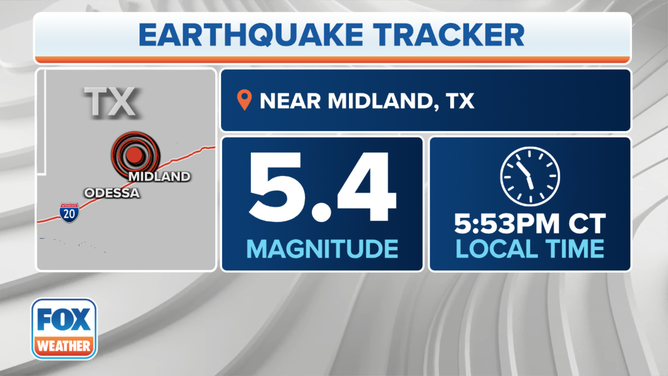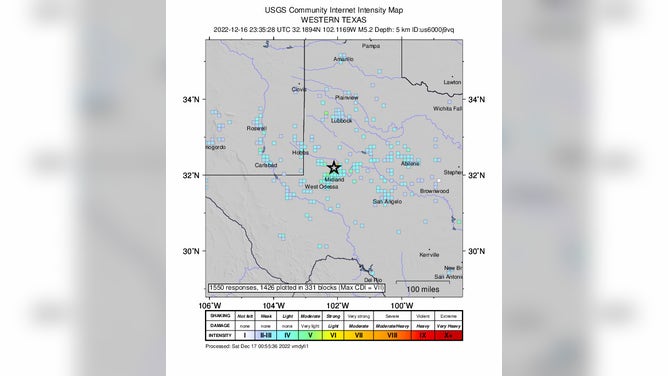Magnitude-5.4 earthquake latest in a series of seismic events to shake Texas
The area impacted by the recent Texas quake falls outside of the Northern Culberson-Reeves Seismic Response Area, where injection volumes from fracking have been limited due to increased seismic activity.
Magnitude 5.3 earthquake strikes near Midland, Texas
Magnitude 5.3 earthquake strikes near Midland, Texas on Friday.
MIDLAND, Texas – Nearly a month after a magnitude-5.4 earthquake rocked parts of the Lone Star State, residents were again caught off guard Friday evening by another magnitude-5.5 quake centered near the town of Midland.
The United States Geological Survey reported the quake took place about 3 miles under the rural Texas terrain, but the shaking was reported over a wide area that stretched from New Mexico through the heart of Texas.
Seismologists said small earthquakes are not uncommon in Texas, but larger events are rare. Many of the quakes are linked to oil fracking and the reinjection of fluids underground.
"The area is known for oil and gas production, so that will research. We’re sure people are going to be looking at the number of wastewater injection sites in the region," a USGS seismologist said.
UNUSUALLY STRONG EARTHQUAKE RATTLES LONE STAR STATE

Magnitude-5.4 magnitude earthquake impacts Texas on 12/16/2022
(FOX Weather)
November’s 5.4-magnitude, which occurred about 100 miles away from the epicenter of Friday’s quake, caused the state’s oil and gas regulators to propose tougher temporary restrictions on oil and gas production to help limit seismic activity.
Seismologists said it was still too early to determine whether the most recent quake is linked to wastewater injection. Still, researchers will be working around the clock to determine the cause.
There were no initial reports of significant damage around the quake’s epicenter or in other regions of Texas.
If the magnitude is not adjusted downward, the quake will rank as one of the strongest to impact the region.
According to USGS records, a magnitude-6.0 earthquake that shook the town of Valentine in 1931 holds the record for being the largest to impact the state.

USGS earthquake shake map
